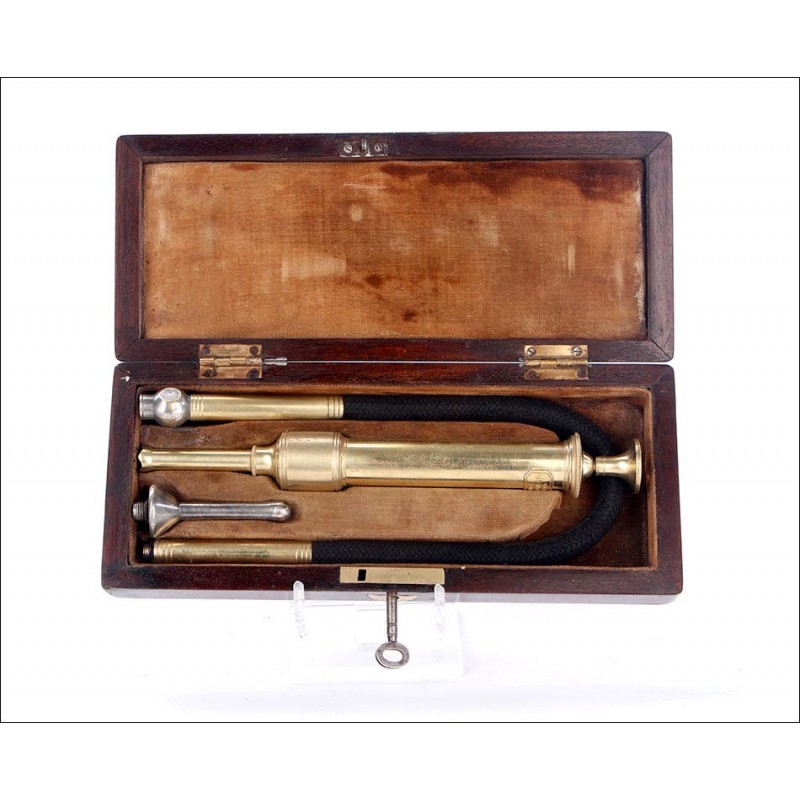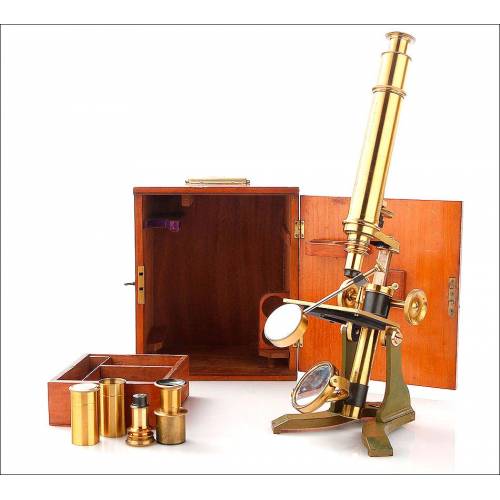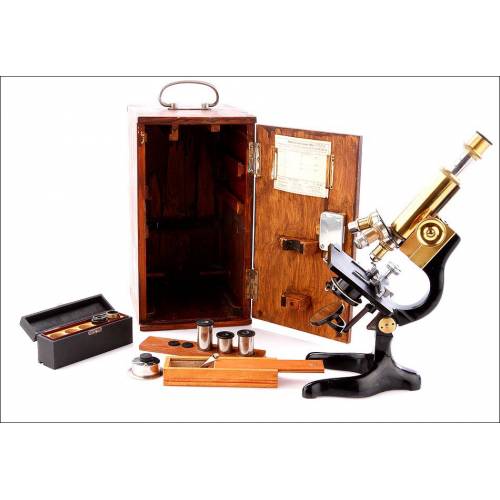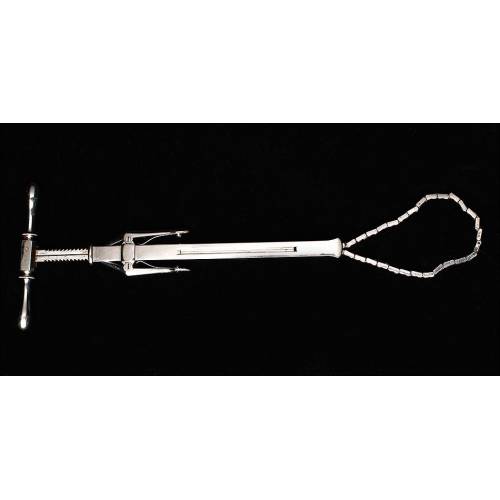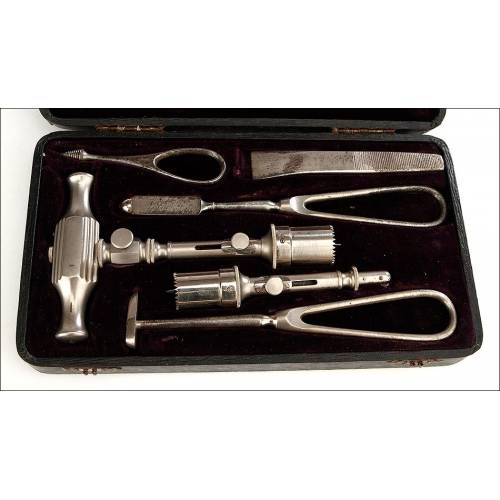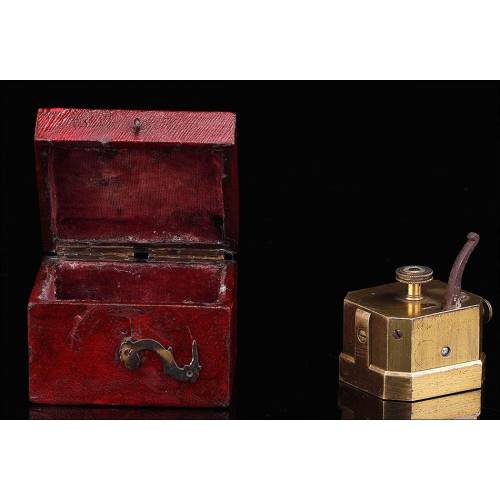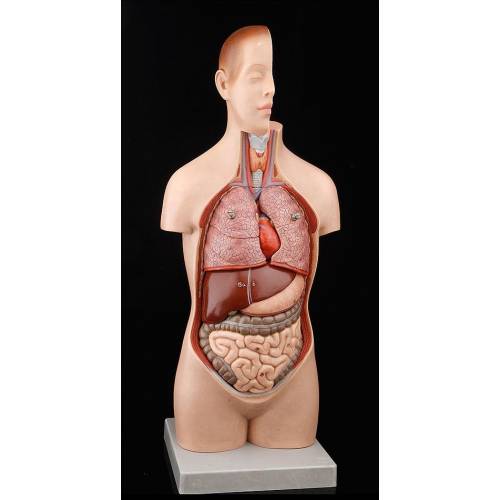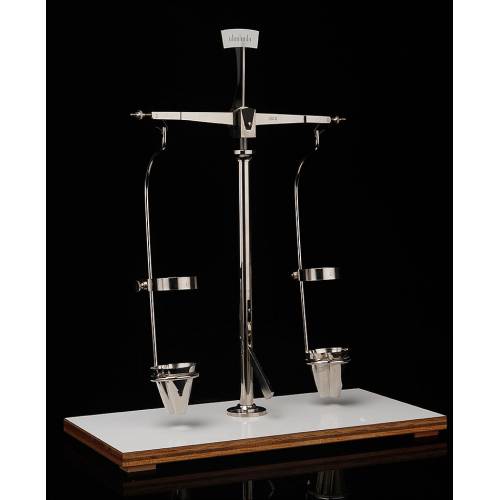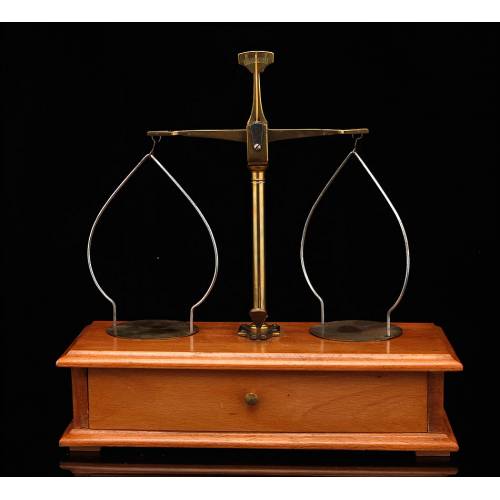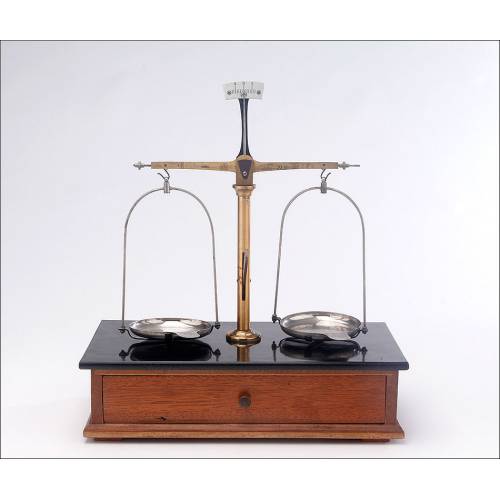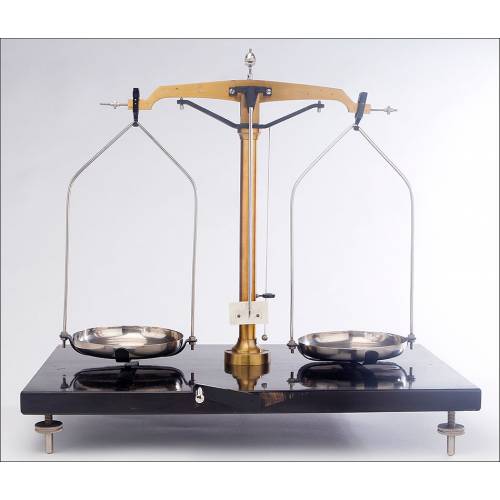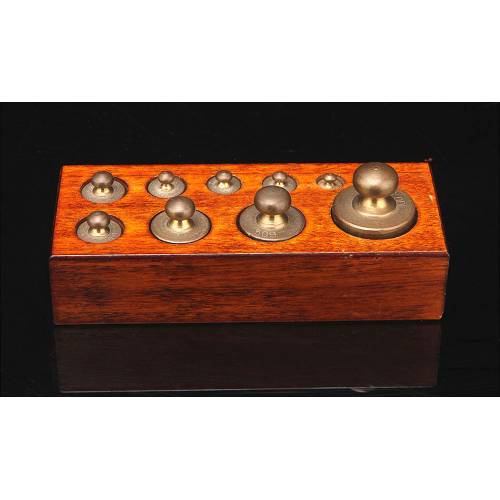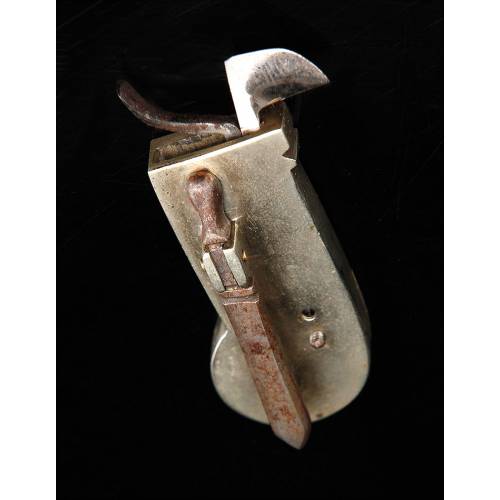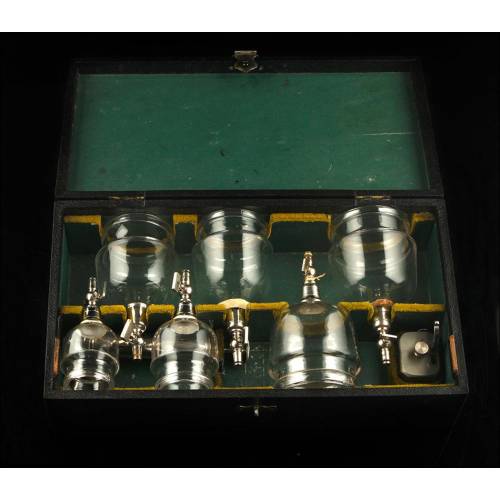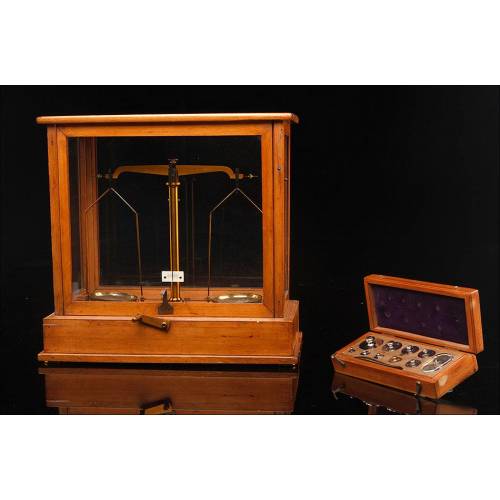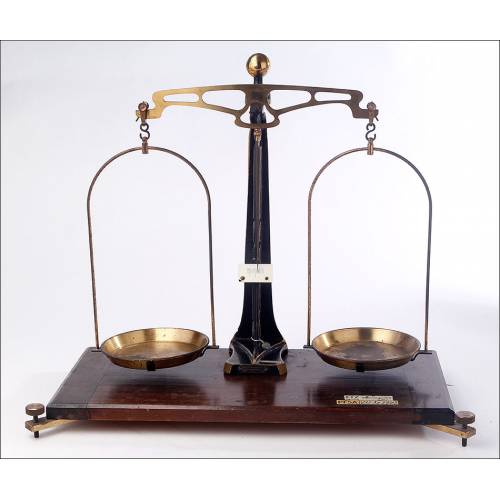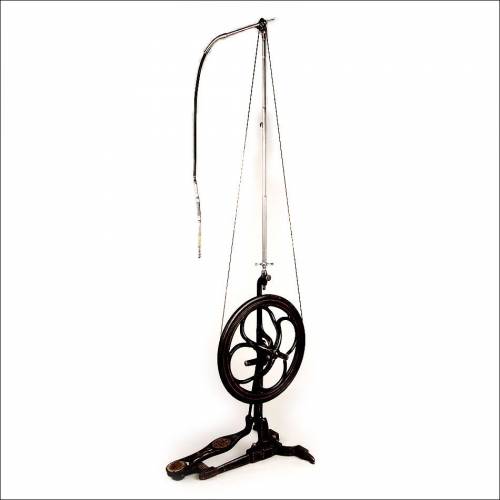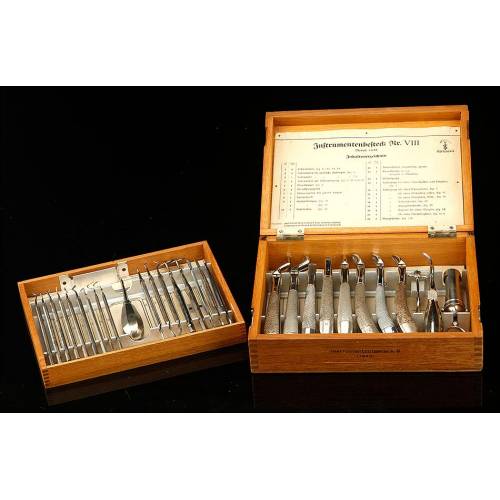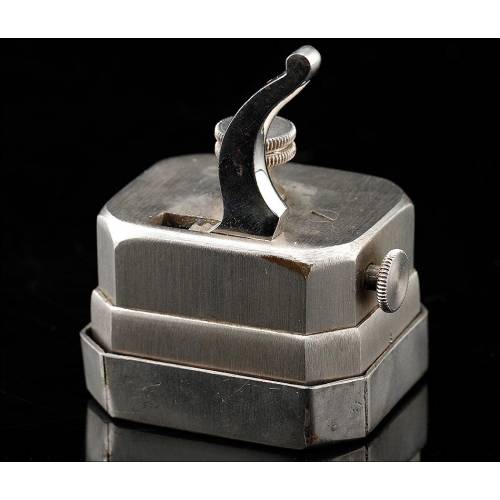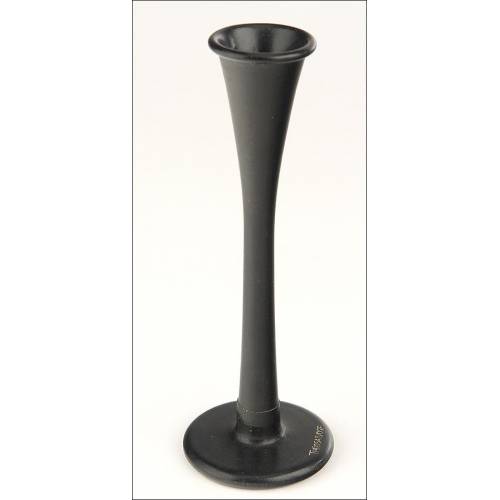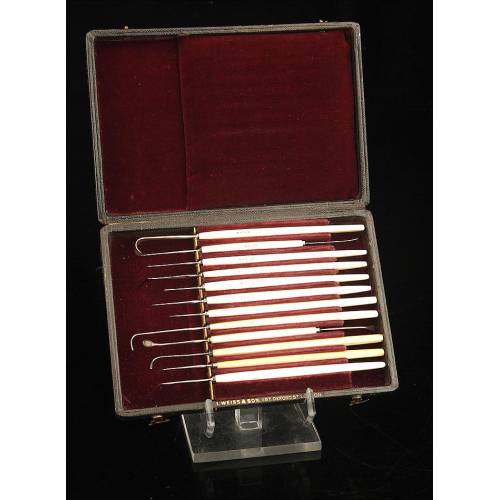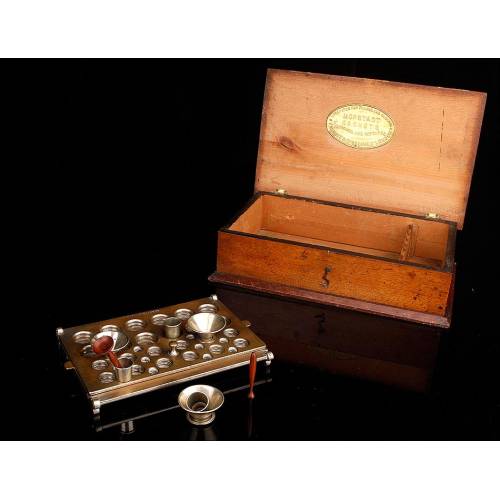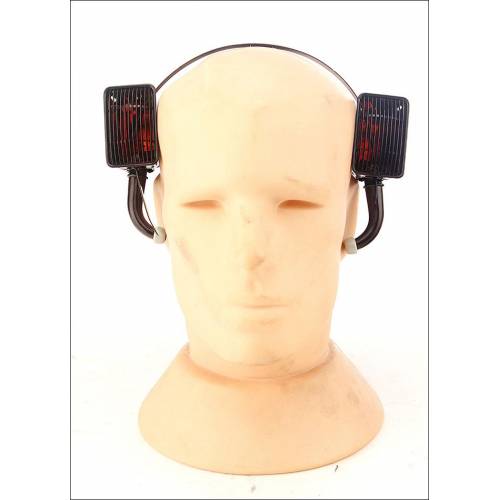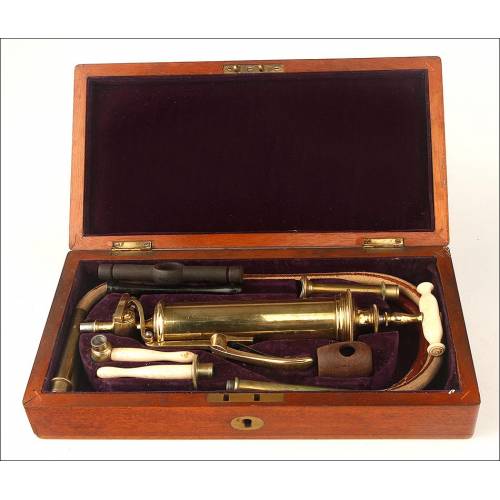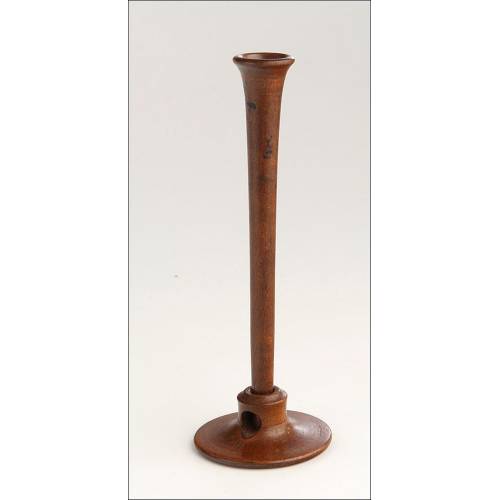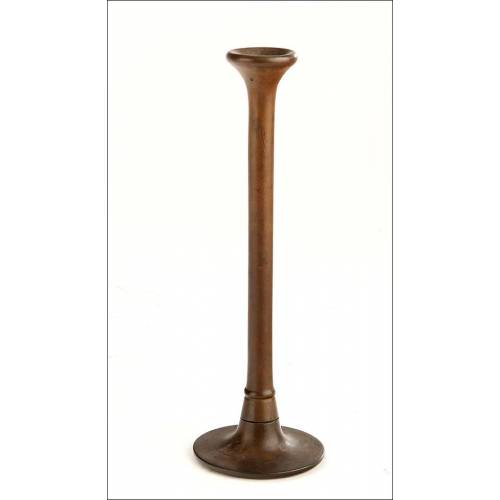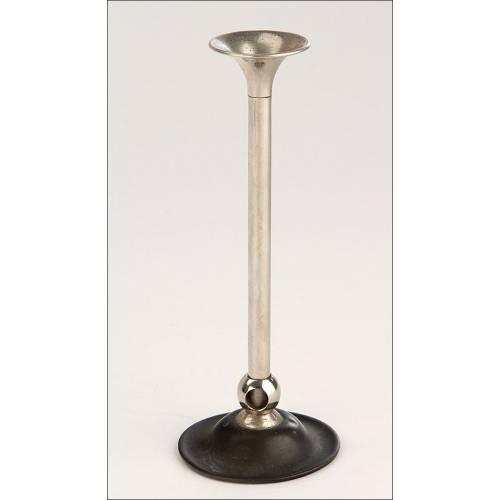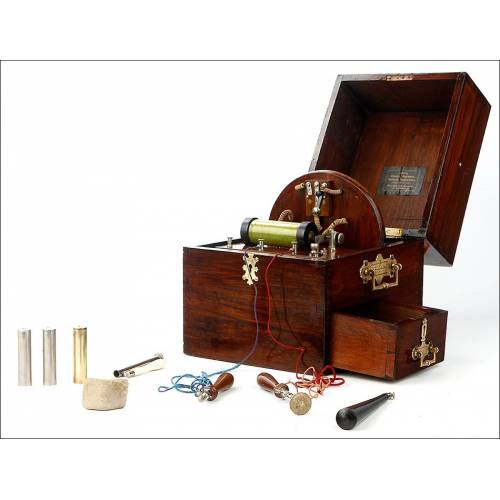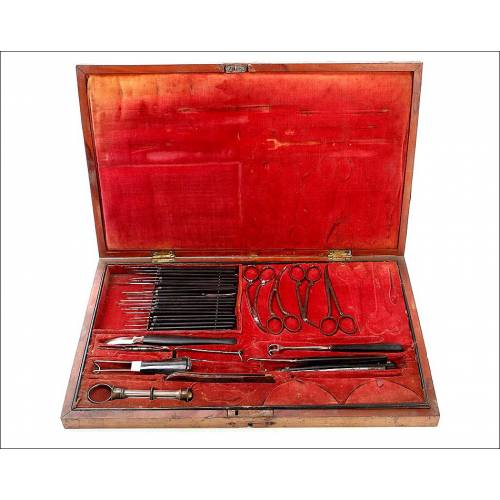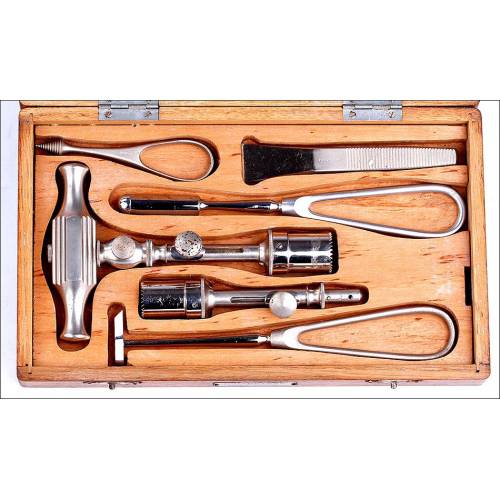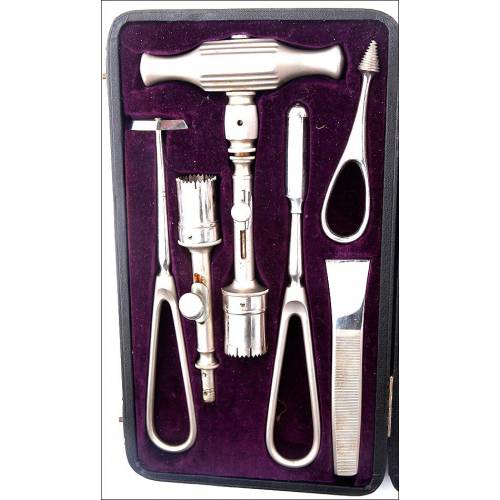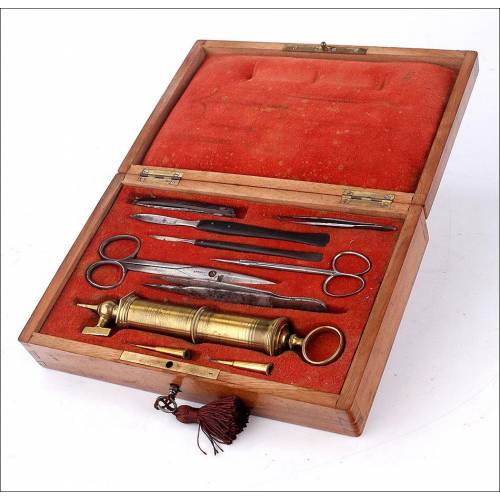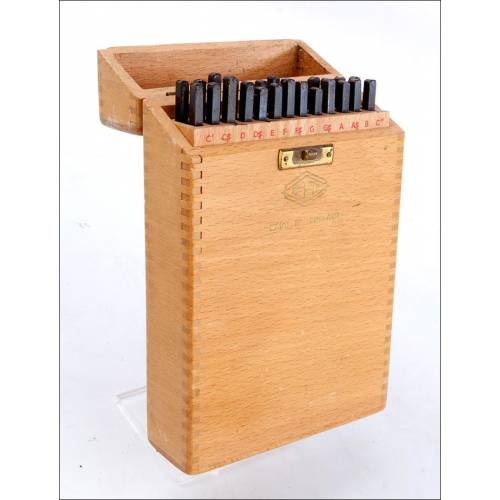B-616
Enema Pump, 19th Century
Rare vintage enema pump, in good condition and in its original case. Collector's item.
Sold!
This curious device for medical use is an enema syringe original from the late 19th century. It comes from England and is in great condition, preserving all its original component parts. The pieces are made of golden brass and silvery metal, both quite well preserved the metal does not show any traces of rust or wear. The leather valve is also original and is slightly worn; should anyone like to use the syringe, it would have to be changed for a new one. The lovely wooden case where the item can be stored is also original from the period. Enemas are performed since the beginning of the history of civilizations. The first register to be considered dates from 1500 BC and was located in Egypt. It appears in the Ebers Papyrus, one of the first medical documents in the world. During the centuries, enemas were considered a great way to purify the body and heal stomach illnesses. They were performed in quite different cultures such as Asian, pre-Columbian and European ones. In France, in the years before the Revolution enemas reached their zenith in the courts of kings Louis XIV and XV. In the 20th century, colon therapies became highly popular thanks to Dr. John H. Kellogg, a practitioner appearing in the film The Road to Wellville (Alan Parker, 1994). One of the brass pieces bears the engraved name and address of the manufacturer and distributor: WALTERS 16 MOORGATE ST. LONDON. The business was founded in the first half of the 19th century by Joseph Walters. In 1848 he went bankrupt and Walters migrated to Australia. His brother Frederick took over the company and took it to success. The syringe that appears in these images was made in this second period. The case where the device is stored is made of solid walnut wood and has a shield-shaped brass keyhole. It is in amazing condition and preserves the original lock and key in perfect working order. Every lover of rare antiques will find a magnificent piece in this enema syringe, more than one hundred years old. Measurements (Case): Width: 9.2 in / 235 cm. Depth: 3.7 in / 9.5 cm.

